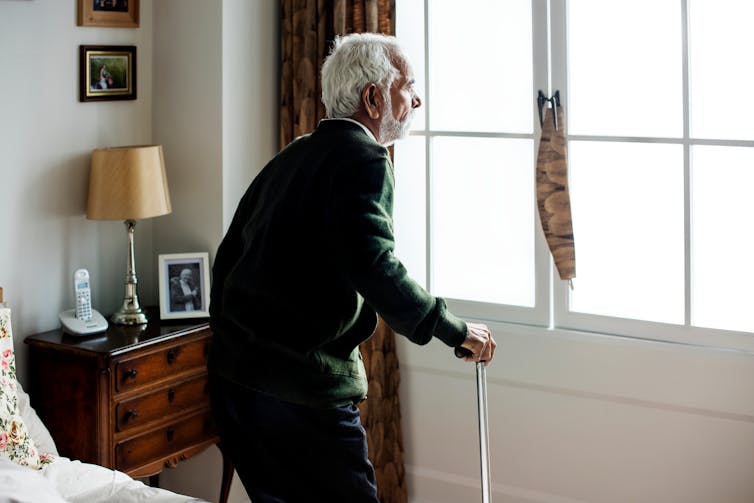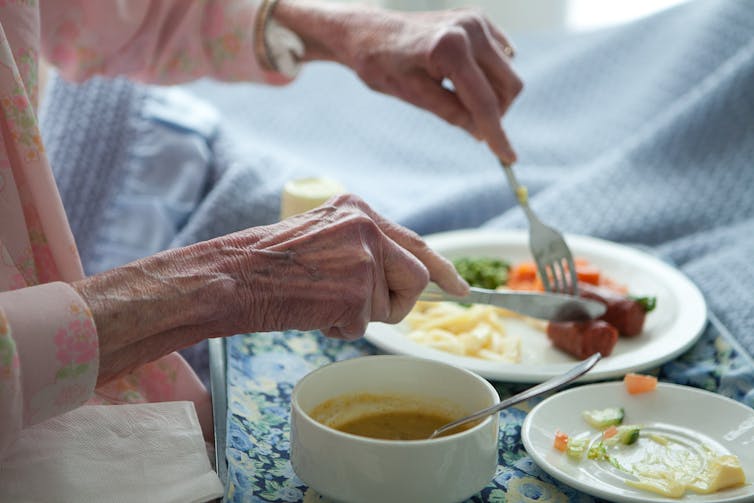The 2023-24 federal budget takes a step in the right direction for aged care, with a much-needed pay boost for workers in the sector.
But there are major medium- to long-term challenges to overcome from cost increases. Despite a royal commission, major commitments from a new government and significant additional funding, around two-thirds of residential aged providers and one-quarter of home care providers are losing money.
If we’re going to have a functioning aged-care system in a decade or two that meets the needs of the ageing population, we need to consider bold reform to make it fit for purpose.
What’s the problem?
Around 60% of government aged care funding is spent on residential care. Impersonal, large scale, “big box” aged-care institutions still dominate the system.
But older people in residential care are still getting less than the mandated three hours and 20 minutes of care per day. Only around $12 a day is spent on food. The commitment to have a registered nurse in all residential-care facilities won’t be met in the time period promised.
Quality costs more. Very few aged care facilities deliver high quality care while also making a profit
Not surprisingly, most people want care at home instead. There has been a massive increase in the number of home care packages in response. This part of the aged-care industry has proven much more profitable.
Even so, home care packages for more older people with more complex needs remain cumbersome and inefficient. Administrative costs are high, funding is too low for people with very complex needs and there are risks with the rapid introduction of new providers and the “uberisation” of services through new online platforms.
A new government Support at Home program is due to reform and replace the existing home care packages, home support program, respite care and short-term restorative care program. But it has again been delayed – now until 2025. There are ongoing concerns about the design and implementation of the program.
A major underlying problem for aged care is that workers are undervalued. Pay is not competitive with the disability and health-care sector and providers struggle to get staff. Career structures, supervision and training are all underdone.

Shutterstock
What’s in the budget for aged care?
The Fair Work Commission determined that wages for direct care workers should be increased by 15%. The budget includes $12.4 billion for aged care, mainly to fund pay increases for 250,000 aged-care workers in residential and home care.
Daily payment rates for aged-care residents will increase by 17.6% to cover pay increases and inflation and an additional 9,500 home care packages will be introduced over the next year.
This year’s federal budget is a step in the right direction, particularly in improving pay rates for aged-care workers. But the medium to longer term future for aged care remains bleak without significant further reform.
What’s missing from the budget?
Demand will increase dramatically as the number of people over 80 grows, the availability of informal carers decreases and community expectations increase. And there are continuing concerns about the way services are designed, organised and delivered.
Estimates suggest Australia will need to increase aged-care spending by $10 billion a year to implement the aged care royal commissions recommendations.
It would need to double to around 3% of GDP to be in line with high-quality aged care in comparable OECD countries.
More funds for aged care won’t make it future-proof. 4 key strategies for sustainable growth
Current funding is a complicated and unsustainable mix of Commonwealth government payments, means-tested user contributions and capital contributions for residential care.
Commonwealth payments are generated from general revenue. Effectively this is a pay-as-you-go model where today’s taxpayers meet the costs. Inevitably that means growth in spending is an ongoing political balancing act in the hurly burly of the annual budget process. There is no guarantee growth funding will be provided in the medium to longer term.
What are the alternatives?
There are alternatives, but none of them are likely in Australia.
A social insurance model like the transport accident, workers’ compensation and superannuation schemes could be introduced to fund aged care, at least in part. That would mean workers (and potentially their employers) would contribute to their potential future aged-care costs during their working lives. Social insurance models exist in Germany, Japan, Korea and the Netherlands.
In Australia, there have been calls for a superannuation levy on contributions to fund future aged-care costs. But this would fly in the face of the federal government’s intention to make it clear that the purpose of superannuation is to provide a decent retirement income rather than using it as a piggy bank to fund health and aged care.

Shutterstock
An other alternative is wealth taxes to pay for aged care. The current capital contribution schemes for residential care (Refundable Accommodation Deposit and Daily Accommodation Payment schemes) are an inefficient, inequitable and half baked model. More equitable, targeted universal estate taxes could be introduced to fund aged care, but that would raise the politically uncomfortable spectre of death duties.
The most palatable option to provide future growth funding for aged care would be the introduction of an aged-care levy as part of the general tax mix. A 1% levy, similar to the Medicare levy, would raise around $8 billion a year.
While Treasury generally opposes hypothecated levies, levy revenue already partially funds health and disability care. It would be reasonably easy to introduce (and popular with the community) for aged care.
Overseas recruitment won’t solve Australia’s aged care worker crisis




